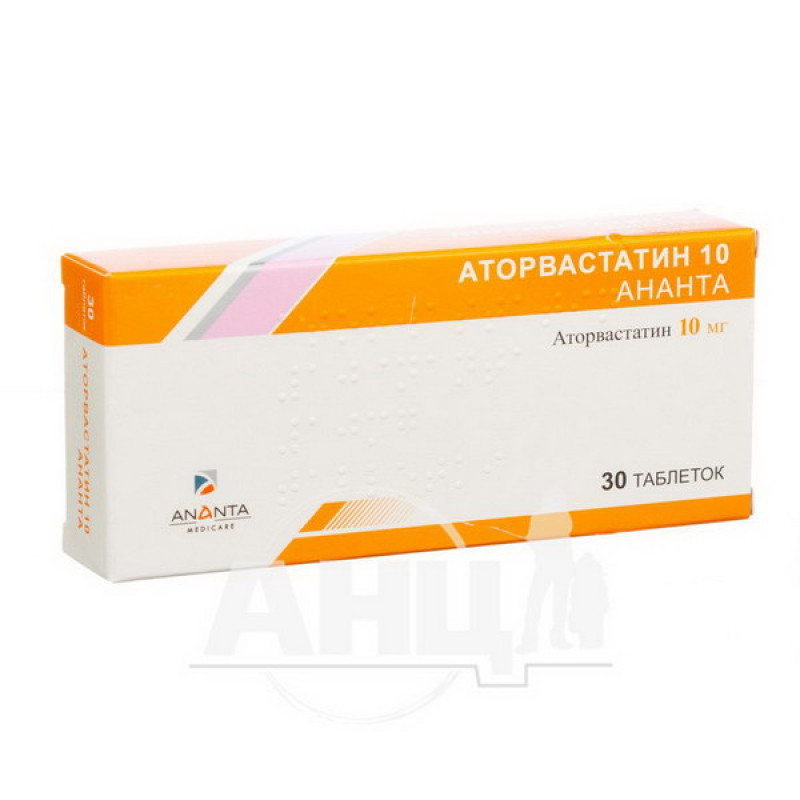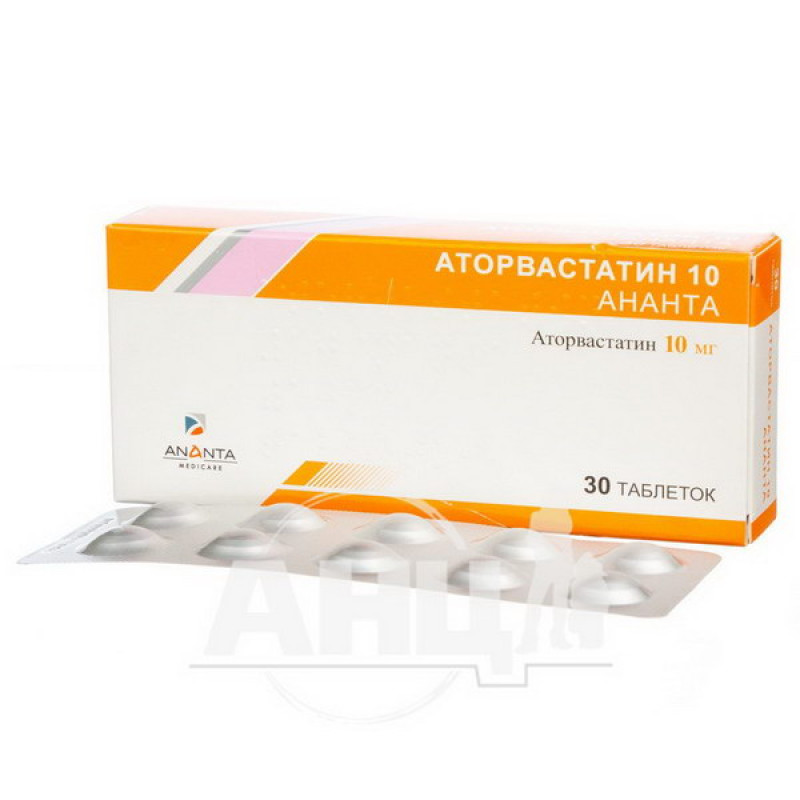Atorvastatin 10 Ananta film-coated tablets 10 mg blister No. 30

Atorvastatin 10 Ananta film-coated tablets are indicated for:
prevention of cardiovascular disease; reduction of the risk of myocardial infarction; reduction of the risk of stroke; reduction of the risk of revascularization procedures and angina pectoris. reduction of the risk of non-fatal myocardial infarction; reduction of the risk of fatal and non-fatal stroke; reduction of the risk of hospitalization for congestive heart failure.Composition
Active ingredient: atorvastatin;
1 tablet contains atorvastatin calcium equivalent to atorvastatin - 10 mg;
Excipients: lactose monohydrate, microcrystalline cellulose, magnesium stearate, sodium croscarmellose; corn starch, hydroxypropylcellulose; hydroxypropylmethylcellulose; polyethylene glycol; titanium dioxide (E 171).
Contraindication
Active liver disease, which may include persistent elevations of hepatic transaminases of unknown etiology.
Hypersensitivity to any of the components of this medicinal product.
Method of application
Before starting therapy with atorvastatin Ananta, the level of hypercholesterolemia should be determined against the background of an appropriate diet, physical exercises and measures aimed at reducing body weight in obese patients should be prescribed, and other diseases should be treated. During treatment with atorvastatin Ananta, patients should follow a standard low-cholesterol diet. The drug should be administered at a dose of 10-80 mg 1 time per day daily, at any time of the day, regardless of meals. The starting and maintenance dose can be individualized according to the initial level of LDL-C, the goals of therapy and its effectiveness. 2-4 weeks after the start of treatment and / or dose adjustment of atorvastatin Ananta, the lipid profile should be determined and the dose adjusted accordingly.
Application features
Pregnant women
Not applicable.
Children
From the age of 10.
Drivers
It has a very slight effect on the reaction speed when driving or working with other mechanisms.
Overdose
There is no specific treatment for atorvastatin overdose. In case of overdose, the patient should be treated symptomatically and, if necessary, supportive measures should be applied. Given the high degree of binding of the drug to plasma proteins, a significant increase in the clearance of atorvastatin by hemodialysis should not be expected.
Side effects
Atorvastatin is generally well tolerated.
Adverse reactions include: chest pain, facial edema, fever, asthenia, neck stiffness, weakness, photosensitivity reactions, generalized edema, malaise, pyrexia, peripheral edema.
Interaction
The risk of myopathy during statin treatment is increased with concomitant use of fibric acid derivatives, lipid-modifying doses of niacin, cyclosporine, or potent CYP 3A4 inhibitors (e.g. clarithromycin, HIV protease inhibitors, and itraconazole).
Grapefruit juice. Contains one or more components that inhibit CYP 3A4 and may increase plasma concentrations of atorvastatin, especially with excessive consumption of grapefruit juice (more than 1.2 liters per day).
Atorvastatin and its metabolites are substrates of the OATP1B1 transporter. OATP1B1 inhibitors (e.g. cyclosporine) may increase the bioavailability of atorvastatin. The AUC of atorvastatin was significantly increased when atorvastatin 10 mg was co-administered with cyclosporine 5.2 mg/kg/day compared to atorvastatin alone. The concomitant use of atorvastatin and cyclosporine should be avoided.
Storage conditions
Store in the original packaging at a temperature not exceeding 30 °C.
Keep out of reach of children.
Shelf life - 3 years.
There are no reviews for this product.
There are no reviews for this product, be the first to leave your review.
No questions about this product, be the first and ask your question.










